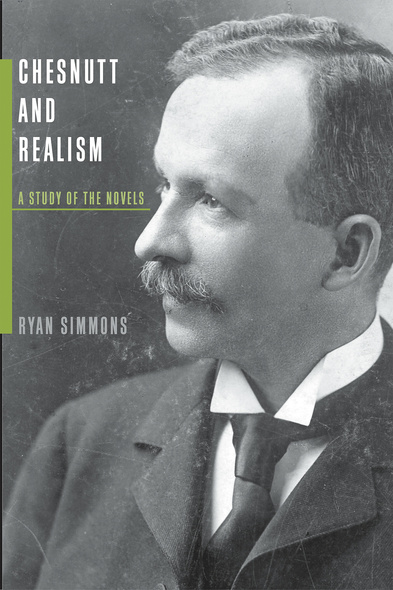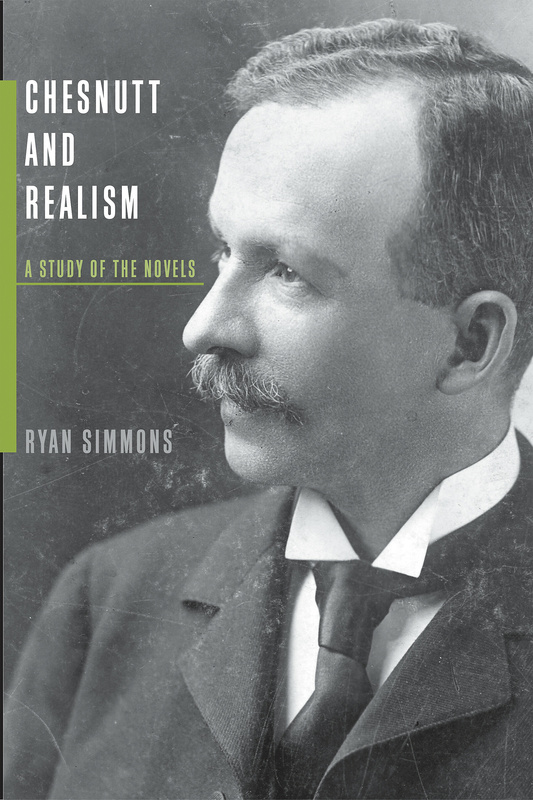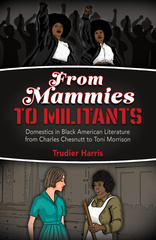Provides an important examination of Charles Chesnutt as a practitioner of realism
Although Chesnutt is typically acknowledged as the most prominent African American writer of the realist period, scholars have paid little attention to the central question of this study: what does it mean to call Chesnutt a realist? As a writer whose career was restricted by the dismal racial politics of his era, Chesnutt refused to conform to literary conventions for depicting race. Nor did he use his imaginative skills to evade the realities he and other African Americans faced. Rather, he experimented with ways of portraying reality that could elicit an appropriate, proportionate response to it, as Ryan Simmons demonstrates in extended readings of each of Chesnutt’s novels, including important unpublished works overlooked by previous critics.
In addition, Chesnutt and Realism addresses a curiously neglected subject in American literary studies—the relationship between American literary realism and race. By taking Chesnutt seriously as a contributor to realism, this book articulates the strategies by which one African American intellectual helped to define the discourses that influenced his fate.
Although Chesnutt is typically acknowledged as the most prominent African American writer of the realist period, scholars have paid little attention to the central question of this study: what does it mean to call Chesnutt a realist? As a writer whose career was restricted by the dismal racial politics of his era, Chesnutt refused to conform to literary conventions for depicting race. Nor did he use his imaginative skills to evade the realities he and other African Americans faced. Rather, he experimented with ways of portraying reality that could elicit an appropriate, proportionate response to it, as Ryan Simmons demonstrates in extended readings of each of Chesnutt’s novels, including important unpublished works overlooked by previous critics.
In addition, Chesnutt and Realism addresses a curiously neglected subject in American literary studies—the relationship between American literary realism and race. By taking Chesnutt seriously as a contributor to realism, this book articulates the strategies by which one African American intellectual helped to define the discourses that influenced his fate.
Readers will doubtless view the liberation of Chesnutt from a narrow definition of literary realism as this book's most obvious contribution to our understanding of this major American writer. Simmons's close readings of the novels repeatedly reveal the complexity of their characterizations and themes. This study will be appreciated by those interested not only in Chesnutt's personality and art but also in race relations in the U.S. from the 1870s through the 1920s, the emergence of a sophisticated African-American literary tradition at the beginning of the 20th century, and the historical relationship between the prose romance and novel genres in American literature.’
—Joseph R. McElrath, editor of Charles W. Chesnutt: Essays and Speeches
‘In looking at the relationship between American realism and the work of Charles Chesnutt, Simmons . . . examines the geography of Chesnutt’s life as a metaphor for his personally experienced southern and northern racism and racism attached to a person of mixed race. . . . He concludes that Chesnutt’s point was that race is socially constructed and that, in the world Chesnutt’s characters inhabit, race is significant and blackness is a fact of identity.’
—CHOICE
‘Chesnutt and Realism challenges traditional definitions of realism by carefully redefining its terms to circumscribe the many shifts in Chesnutt’s writing career. Further, Simmons emphasizes the neglect of realism as a useful category for Chesnutt scholarship while remaining in conversation with pertinent scholarship on realism and race, including that of Joseph McElrath, Brook Thomas, William L. Andrews, and Kenneth Warren. In doing so he creates a portrait of Charles Chesnutt that reflects his attentiveness to the moral and political power of literature and his commitment to realism in his depiction of race matters in American culture.’
—Studies in American Fiction
Ryan Simmons is an instructor at Spokane Falls Community College, where he teaches courses including English, African American literature, and multicultural literature.
Acknowledgments
Introduction: Of Race and Realism
1. Learning to Be a Realist: Chesnutt’s Northern Novels
2. Time Passing: Chesnutt’s Revisions of the “Tragic Mulatta” Tale
3. Simple and Complex Discourse in The Marrow of Tradition
4. The Colonel’s Dream: Reconsidering a Radical Text
5. “The Category of Surreptitious Things”: Paul Marchand, F.M.C. and The Quarry
Notes
Works Cited
Index








